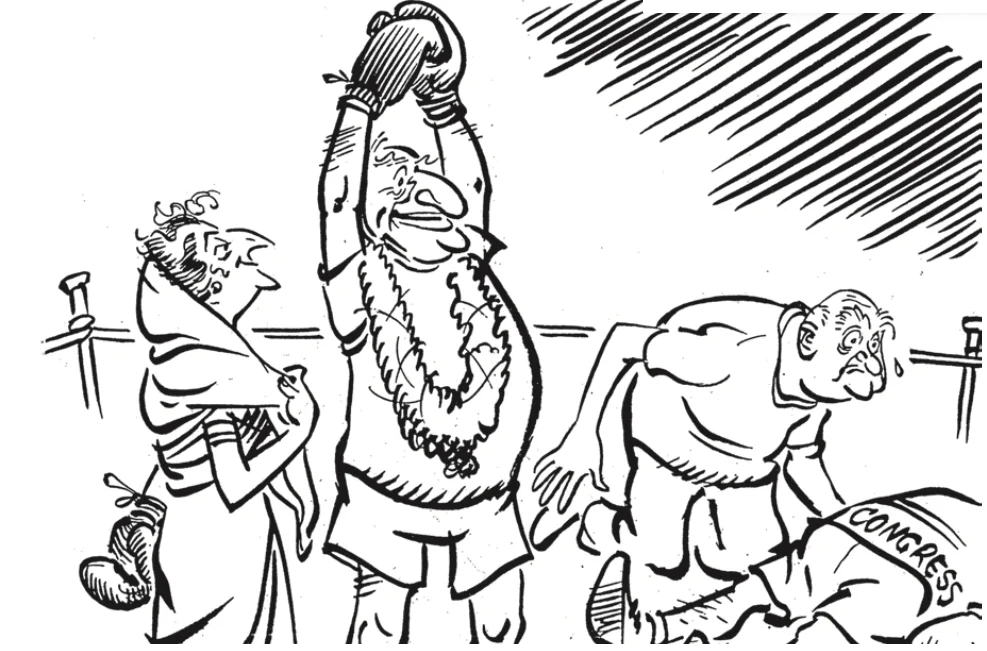![]() 26 Jul 2024
26 Jul 2024
The year 1967 (Refer to Figure 5.6) is considered a landmark year in India’s political and electoral history. Amidst economic crises, social unrest, and rise of “non-Congressism,” Indira Gandhi, a politically inexperienced leader, faced an electorate disillusioned by inflation, unemployment, and communal tensions. Opposition parties united to challenge the Congress’s dominance, seeking to reshape India’s political future.

The elections were marked by significant unrest, and the Congress faced voters without Nehru for the first time.

The 1967 elections ushered in the era of coalition politics (Refer to Figure 5.7). Various non-Congress parties formed joint legislative parties (Samyukta Vidhayak Dal) to support non-Congress governments. These coalitions often comprised ideologically incongruent partners.
The politics after the 1967 elections witnessed significant defections.

The election results demonstrated Congress’s vulnerability. After the 1967 elections, Congress remained in power at Centre but with a decreased majority and lost in many States.
Internal Conflict: Indira Gandhi’s major challenge arose not from the opposition but from within her party.
The Congress ‘Syndicate’ Profile
|
Indira Gandhi Challenges to Party Establishment: In 1969, following death of President Zakir Hussain, a tussle arose over his successor.


Abolition of Privy Purse
|
| Must Read | |
| Current Affairs | Editorial Analysis |
| Upsc Notes | Upsc Blogs |
| NCERT Notes | Free Main Answer Writing |
India’s political landscape experienced a significant change during the 1967 elections. During a period of economic uncertainty and societal upheaval, Indira Gandhi encountered major hurdles from opposing groups pushing for “non-Congressism.” Even though Congress maintained control, it experienced significant losses and emergence of regional parties. The period saw a rise of coalition politics and regular party switching, resulting in a division in Congress and Indira Gandhi’s calculated actions to strengthen her power, reshaping the party and its principles.
| Related Articles | |
| Economic Survey 2024 Date, Highlights, & Summary | Indira Gandhi |
| Constitution: A Living Document | PRIME MINISTER OF INDIA |
<div class="new-fform">
</div>